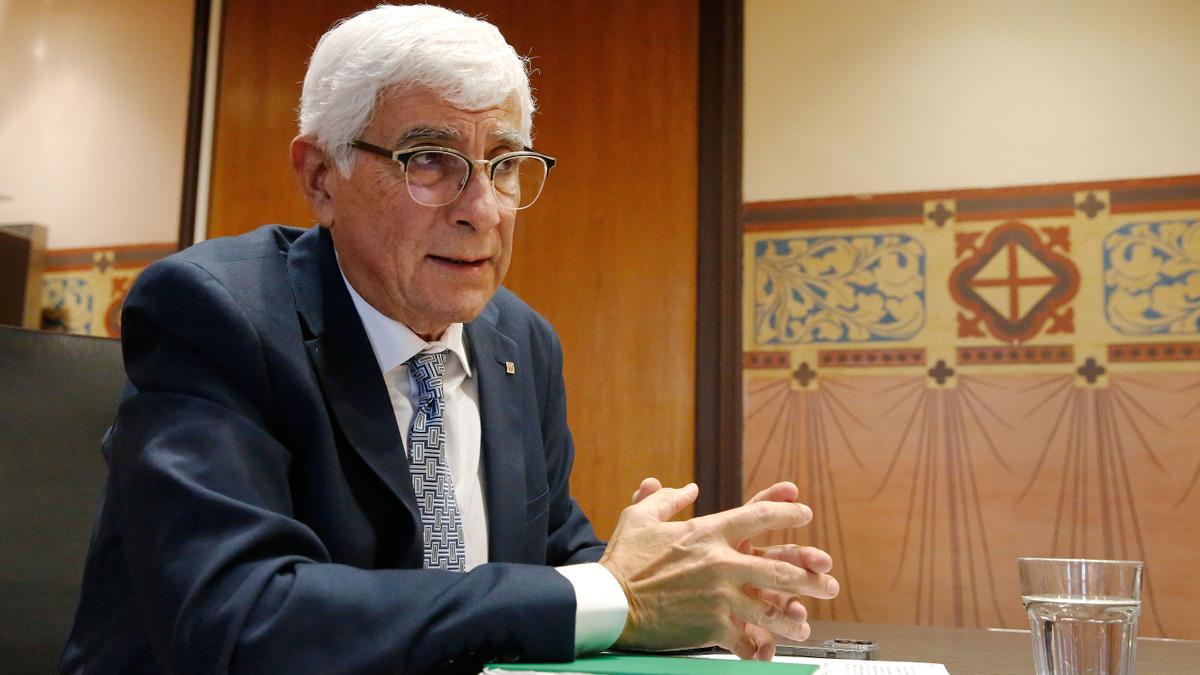The demonstration by health workers against the health directorate of the President of the Community of Madrid, Isabel Díaz Ayuso, followed by the strike called by the Metges de Catalunya union for the end of January, has put public health at the center of the debate. Neither of the two health systems is at the top of the ranking, neither for investment, nor for personnel, nor for waiting lists. In fact, these two territories are those with the highest proportion of people affiliated to a private mutual insurance company: 38% in Madrid and 33% in Catalonia, compared to 24% for the state average, according to data from the association. employer Unespa (Union Association of Insurance and Reinsurance Entities) obtained by Verificat.
Catalonia outperforms Madrid in all health spending indicators, although in most cases both communities are at the bottom of the regional rankings and below the state average. Even so, Madrid has more medical personnel per capita, but with fewer beds, operating theaters and day beds. When it comes to waiting lists, in Catalonia it takes more or less twice as long to get an appointment for surgeries as in Madrid.
Catalonia spends more on health
According to the consolidated actual expenditure figure, Catalonia allocated 6.3% of its GDP to health, compared to 4.7% in Madrid in 2020, the latest year for which data is available, according to public statistics on expenditure on health. (EGSP) published by the Ministry of Health. These are the two Autonomous Communities that allocate a lower percentage of their GDP to public health, both below the state average (6.9%). Calculating per capita, Catalonia is in the middle of the list, with 1,760 euros per capita, some 120 above the average. Madrid occupies the penultimate position (1,491 euros per person). Focusing only on primary care, Catalonia is also in the lead: 226 euros per inhabitant compared to 158 in Madrid.
But Catalonia has cut primary spending more than Madrid since the onset of the economic crisis in 2008, according to EGSP data. In 2020, the Catalan administration spent 5.2% less than in 2009, while the drop in Madrid was 1.6%.
Fewer medical staff, more nurses
The number of medical personnel is closer to the state average. In Catalonia, 3.4 professionals work per 1,000 inhabitants, a figure that Madrid exceeds by three tenths. Both communities are around the state average (3.5), as indicated by Department of Health data for 2021. In terms of nursing staff, the two communities are tied at 4.3 professionals per 1,000 inhabitants, two tenths below the average.
Regarding primary care staff, Catalonia slightly exceeds Madrid (0.73 doctors per 1,000 inhabitants compared to 0.68 in Madrid), but both are below the average, by 0.77, according to the portal ministry statistics. The shortage of primary nurses in the Community of Madrid is more marked: 0.51 per 1,000 inhabitants, below the 0.68 in Catalonia and the national average of 0.66.
Another classic indicator for assessing the quality of the public healthcare system is the number of hospital beds available. In 2020, in Catalonia there were 3.83 beds in service per 1,000 inhabitants, at the top of the regional ranking and well above the 2.73 in Madrid.
Waiting lists
Related News
Beyond the resources of the two health systems, the statistic probably most present in the lives of citizens is the waiting time to obtain an appointment at the health center, to see a specialist or to enter the operating room. And here, Catalonia is far behind Madrid. On average, it takes almost three months to access a consultation, a month longer than in Madrid, according to data from the Ministry of Health.
To be operated, the wait is longer. The delay is very variable according to the specialties: the fastest is cardiac surgery, which requires 58 days of waiting in Catalonia and 47 in Madrid. In all the others, the Catalan lists are twice as long as those in Madrid: for general surgery, five months in Catalonia and two in Madrid; for gynecology, 4.3 months in Catalonia and 1.8 months in Madrid; for traumatology, five and a half months in Catalonia and two months and a week in Madrid, and similar figures for vascular surgeries.



